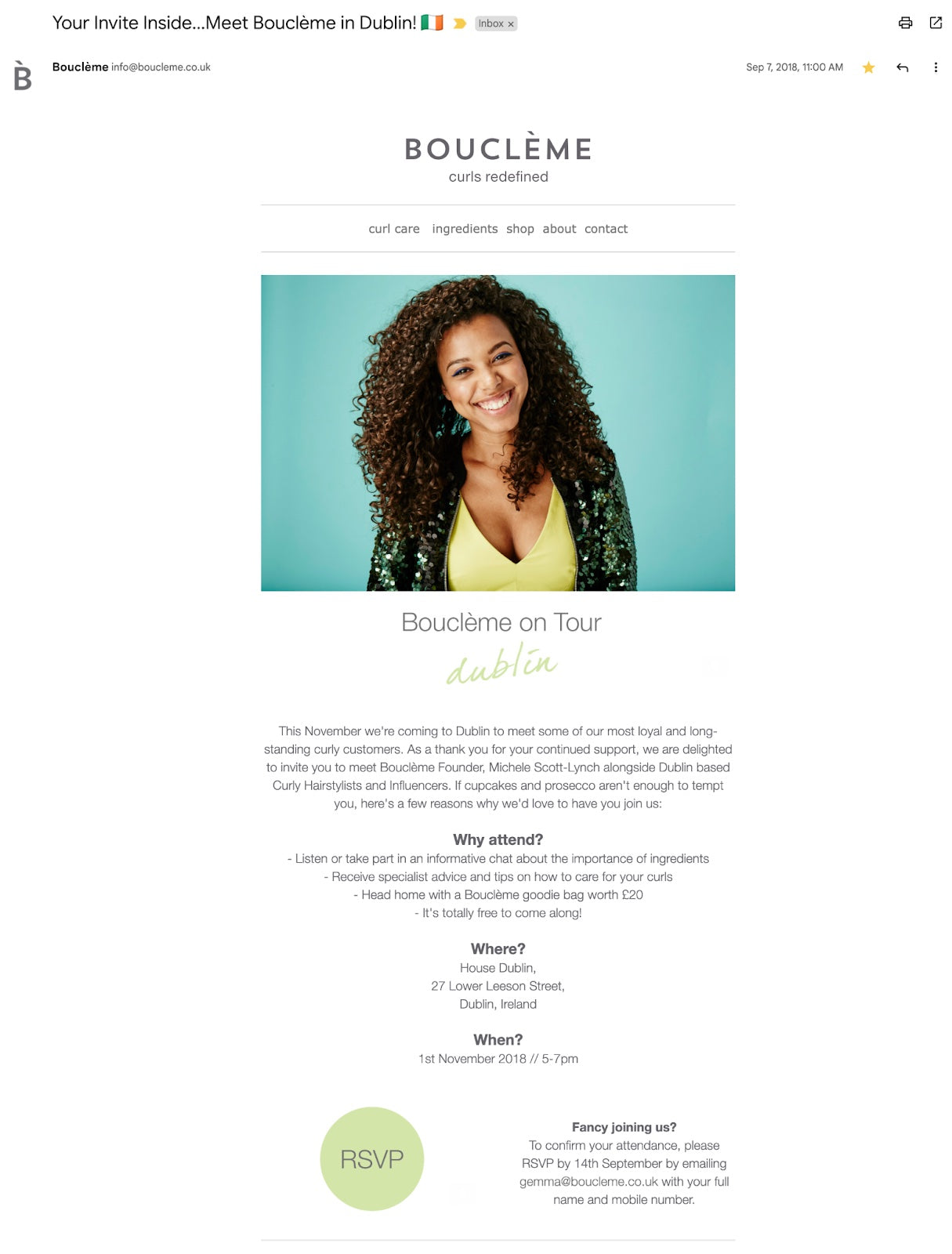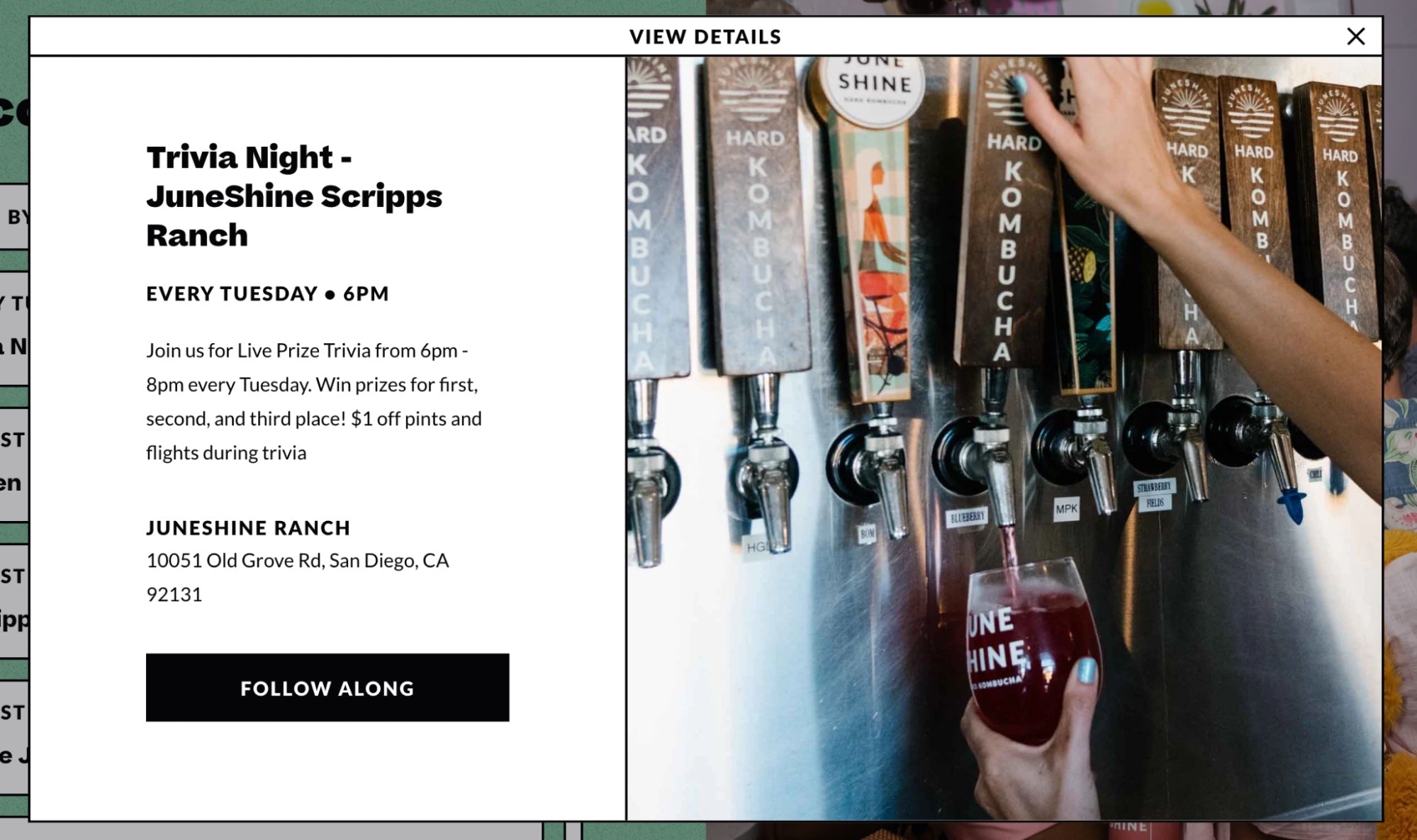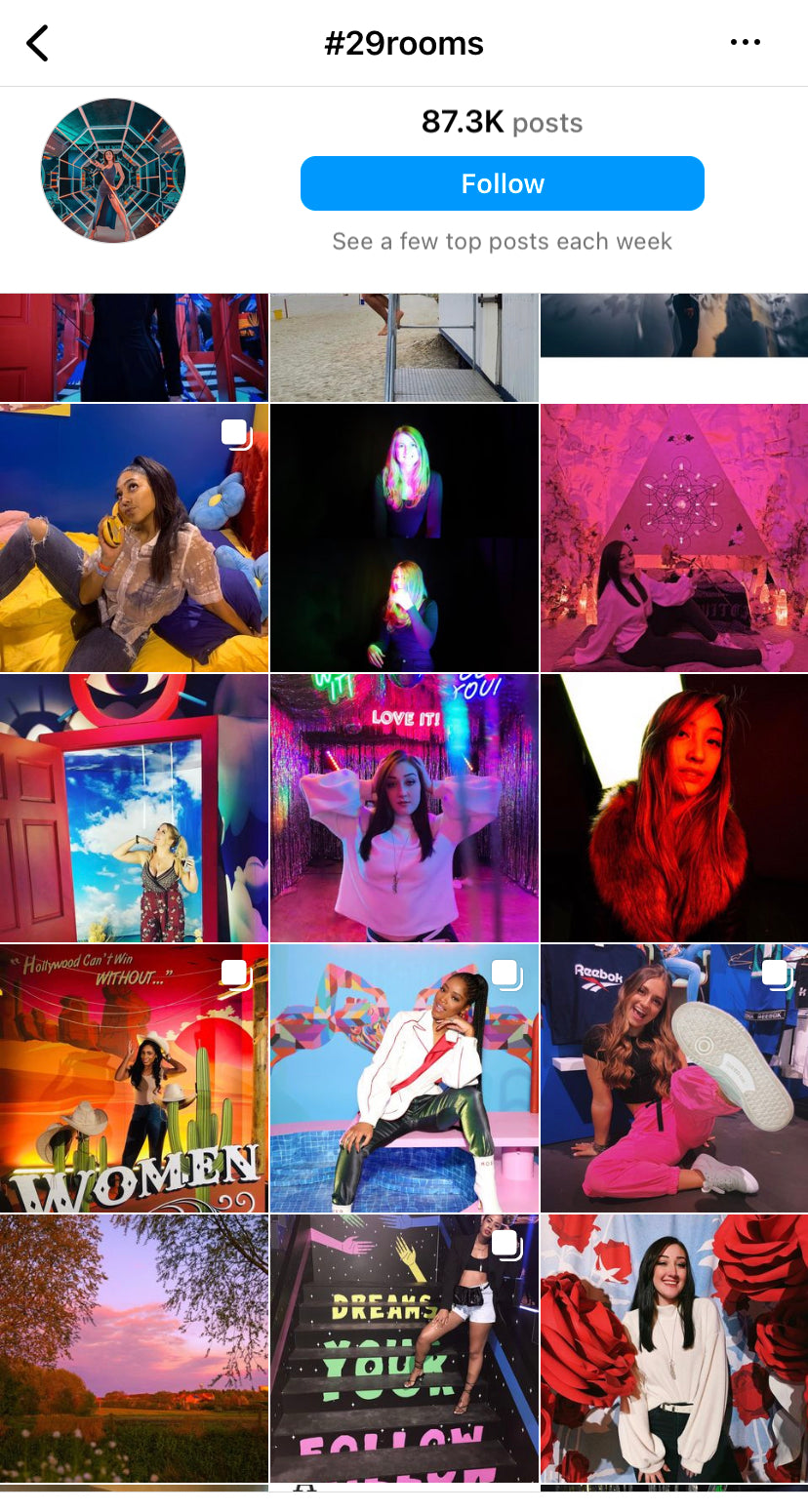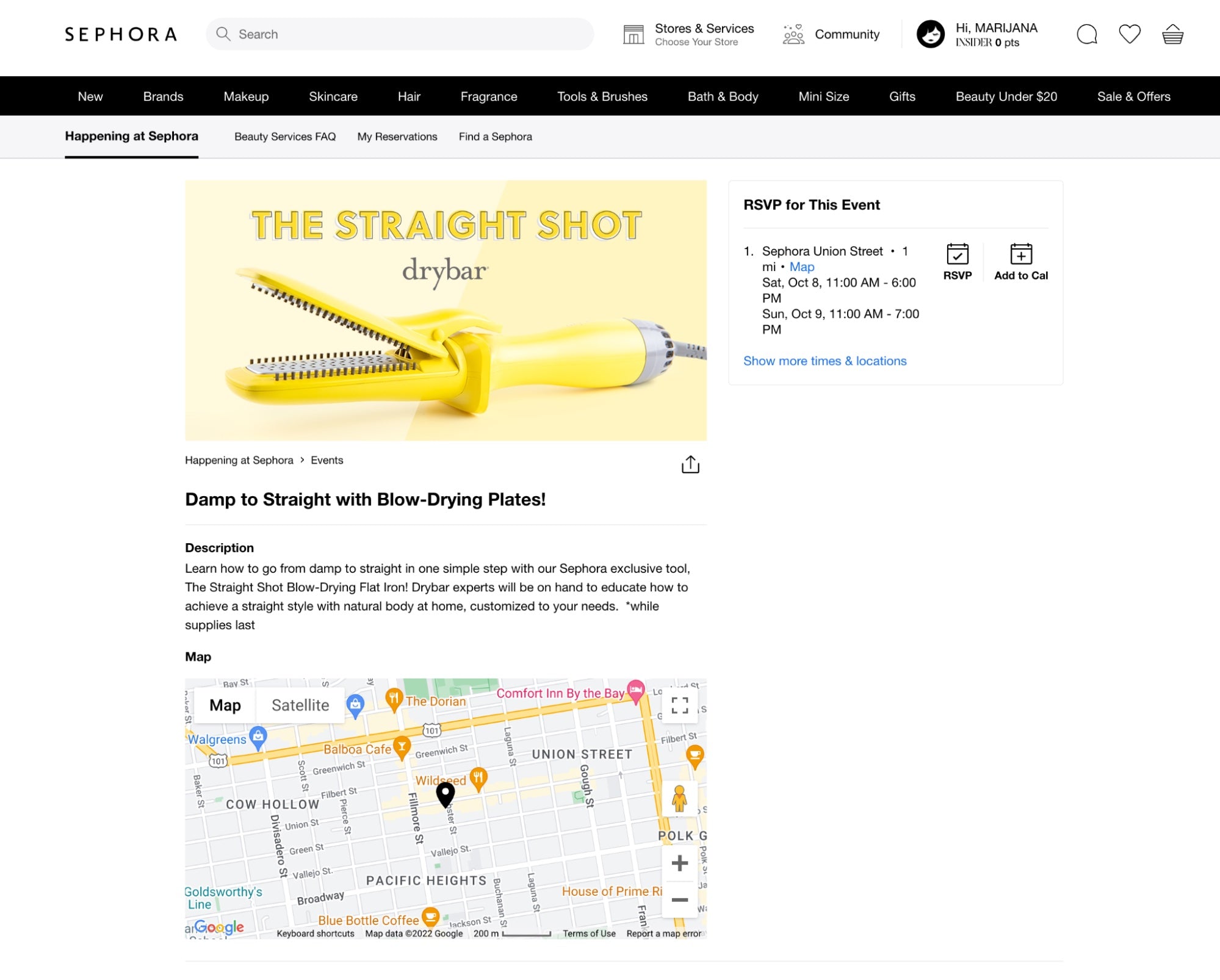SEO. Flyers. Email. Store signage. Social media. Pop-up shops. Word-of-mouth marketing.
As a retailer, it’s easy to get overwhelmed by the sheer number of marketing strategies and channels. Many of them can feel like talking into a void: nobody’s listening.
That’s where event marketing comes in. Local presence and a sense of community are increasingly important when consumers are choosing a brand to buy from.Retail statisticsreveal that almost one-third of consumers say they’re likely to engage with in-store experiential moments. Event marketing is the way to make this happen.
表格of Contents
What is event marketing?
Event marketing is a marketing tactic focused on creating memorable experiences for your target audience.The goals behind event marketing can range from increasing your store’s brand awareness to growing your sales, revenue, or customer loyalty.
Event marketing gives you a chance to connect with your potential or existing customers. Through events like product launches, VIP events, and in-store workshops, you can see how customers interact with your products and hear their thoughts about them (or about your brand as a whole).
Event marketing is typically focused on in-person interactions, workshops, and product displays. However, retail events can also happen online and potentially reach even more people in different locations.
Benefits of event marketing
为many retailers, fostering face-to-face interactions and personalized experiences—also known asexperiential retail—is becoming the key to growth.
Event marketing can help you:
- Increase brand awareness.Retail eventscan help you reach potential customers you otherwise couldn’t. For example, running apop-up shopat a temporary retail space or joining a trade show to connect with consumers who are already interested in your field of expertise.
- Build customer loyalty.Run limited-access events for customers with lots of loyalty points or those who have been your customers the longest.
- Support new product launches.Event marketing is a fantastic tool to build hype fornew products, show them in action, give customers a chance to experience them in real life, and share the experience with friends.
- Boost sales.Lean, easy-to-run events like in-store workshops and online events can create a boost of cash for your store whenever you need it (for example, to invest in new inventory or expand your retail space).
Sell online and in-person with Shopify
Shopify POS is the easiest way to unify ecommerce and store sales and data. Have all the tools you need to manage inventory, track performance, understand customers, and sell everywhere in one easy-to-understand back office.
Types of event marketing
- VIP events
- Product launch events
- Pop-up shops
- In-store workshops and meetups
- Online events
- Conferences and trade shows
Let's take a closer look at each of these types of event marketing tactics.
VIP events
A VIP event is any type of invitation-only event where customers can meet the founder, brand ambassadors, and each other. The VIP element means you get to handpick customers to invite and build a deeper connection with them.
You can organize VIP events such as a dinner party, a drinks event, an educational session about current products or upcoming launches, and more.
为example,Bouclème, a curly-hair-care brand, organized an early evening meetup with the company’s founder and curly hair stylists and influencers:

Product launch events
A product launch event is a predefined period, usually up to a week long, when you put a spotlight on a new product or collection in your store. It can also be a one-day event, like a launch party.
The goal of both options is to get people to interact with and learn about your new product. Longer, in-store launches usually include aproduct displaythat stands out from your usual shelving and uses light, sound, motion, touch, and other experiential elements to draw attention to your latest product release.
Pop-up shops
Launching a pop-up shop is all about showing up where you currently don’t have a presence, but your ideal customers already go. This can be at a vacant storefront, in a shopping center, or at an industry-specific fair or market—thinkcraft fairs and art shows.
Check outFeuille Ceramics, a ceramic studio that exhibits its products at theRenegade Craftfair:
GET STARTED:Shopify POSis the fastest way to accept in-person payments, sell at events, or open a pop-up shop. Download the Shopify POS app onto any smartphone or tablet and rent a mobile card reader to start selling wherever your customers are.
In-store workshops and meetups
Bring your customers into your store for an educational or creative workshop. Unlike VIP events, you can make workshops available to anyone—as long as they save their spot in advance.
Juneshine, a hard kombucha and canned cocktails brand, runs trivia nights, meetups, raffles, and more at its Juneshine ranch and at several other locations in California.

Online events
You can run a virtual, online version of almost any of these events, thanks to tools like Zoom.
为example, you can hold an educational workshop, a launch event with product demonstrations, or a Q&A with an influencer, all over video. Online events usually cost significantly less than in-person events, and have the potential to scale beyond your brick-and-mortar limitations.
Of course, there are in-person elements that video can’t replace, but keep online events in mind as a powerful way to reach more people and spark your store’s growth.
Conferences and trade shows
You can attend events like conferences and trade shows that support your key business goals.
为example, if you’re looking for partners or vendors in a specific area like food and beverage, you can attend a trade show that’s aimed at food and beverage professionals.
If you want to reach new potential customers, you can join a conference or a trade show made for the general public, where you can appear as a speaker, sponsor, or exhibitor and connect with a new audience.
如何构建一个事件营销计划ob欧宝娱乐app下载地址
- Set clear and realistic objectives
- Leverage multiple channels for promotion
- Ensure you can clearly measure ROI
- Execute your event for maximum results
To build an easy-to-follow event marketing plan, follow these four stages.
1. Set clear and realistic objectives
Why do you want to invest your resources into event marketing? As with any marketing strategy, define the objectives you want to achieve with it, such as:
- Increase your store’s footfall
- Reach a new demographic
- Expand into a new location
- Grow your most profitable channel (e.g., email list)
- 推出一个新产品
- Increase sales and/or revenue of a specific product or product line
- Deepen your existing customers’ loyalty
Keep in mind that if your ultimate goal is to grow your store’s overall success, it’s already baked into these examples of event marketing objectives. Use them to go beyond a generic growth goal and get specific with what you want to achieve.
Then use your objective to pick an event marketing type that matches your goal.
2. Leverage multiple channels for promotion
Your target customer might miss the initial announcement of your event. In fact, they might miss it a dozen times before they see it.
That’s why it’s important to promote your event on every channel you’re already using. This includes different social media channels, your newsletter, transactional emails, events advertising, website, physical receipts, and store signage. With the use of retargeting advertising your event through Google Ads and social media is an easy way to remind your website visitors about your event periodically.
专家提示:Want to create beautifully branded emails to promote your next product launch? UseShopify Emailto create, send, and track campaigns, all from within Shopify—no coding experience required.
3. Ensure you can clearly measure ROI
指标和系统能到位吗track the impact of your event marketing efforts? This will depend on your event marketing objectives and can include:
- The change in store footfall during and soon after the event
- Number of new subscribers to your newsletter
- Sales and revenue from a new product launch
- Number of uses of a custom discount code
- Customer spend in the weeks/months following an event they attended
测量你的ROI意味着你可以实现我们什么rked, and learn from what didn’t, for your future events.
Our event was a livestream that featured several of our athlete sponsors and partners. They talked about the new brands we were adding and answered questions from customers and fans. During the event, a special discount code was issued to those who joined, and that’s how we tracked over 650 sales from that event.
专家提示:Only Shopify POS unifies your online and retail store data into one back office–customer data, inventory, sales, and more. Vieweasy to understand reportsto spot trends faster, capitalize on opportunities, and jumpstart your brand’s growth.
4. Execute your event for maximum results
Successful event marketing is about building hype for your event and delivering on what you promised when building that hype.
“You can distinguish yourself as a retailer by creating experiences consumers crave, following a few key concepts, and employing the right technology,” says Mark Sandeno, CEO ofExperiences, a booking management app for Shopify Merchants.
Mark suggests what he calls a PAER approach to executing your event marketing:
- Plan: Give people enough time to get excited about what you’re promoting, and use tools that make it easy to streamline promotion between channels.
- Arrive: Incorporate smells, sounds, and visuals to enhance the moment people join your event; make the check-in process smooth.
- Experience:完全专注于你的客户来的workshop, product demo, etc.) and bring the experience you promised and your brand together.
- Remember: Make the experience memorable, shareable, and lasting through photobooths, sharing prompts, post-experience emails, and more.
We always want to be thinking about how experiences are going to make people feel to aid in positive memory creation. Ask yourself: What do I want people to say about or take away from the experience? What do I want outsiders to understand about the event that will draw them into participating in a future one?
Nine event marketing ideas
- Foster community engagement with user-generated content
- Integrate social media
- Double down on SMS
- Build an event landing page
- Retarget interested customers
- Partner with influencers
- Partner with local organizations
- Send personalized emails
- Run a contest
To get you started, here are nine proven event marketing ideas.
1. Foster community engagement with user-generated content
User-generated content (UGC) is an excellent way to use word-of-mouth marketing.
Refinery29is a media company focused on women’s voices and experiences. It publishes stories about work, money, and lifestyle and curates fashion, beauty, and home products and collections.
One of its well-known events is29Rooms, an interactive exhibition designed by retail brands and creatives. The event visuals naturally entice people to take photos, which is why it’s no surprise that the#29roomsInstagram hashtag counts more than 87,000 uses.

It keeps the conversation about the event going for weeks after the event is over.
2. Integrate social media
Take advantage of as many features of social media as fit your audience, industry, and creative process.
为example, Instagram lets you add a countdown to a date and time you specify. You can use this to build anticipation in the days leading up to your event. This also means your followers can set a reminder for the event, as well as share it with their friends.
您还可以使用社交商务等功能标记ging your products on TikTok and Instagram, including during your live videos.Walmart was the pioneerof live shopping on TikTok in late 2020, and many brands of all sizes have been trying it out ever since.
Don’t forget to share the behind-the-scenes preparation, people involved in your event (including influencers), and other fun insights as you promote your event in the weeks leading up to it.
3. Double down on SMS
SMS marketingcampaigns can be highly effective, and that’s no different with event marketing.
Make it easy to sign up for an event by funneling all your channels toward a mobile subscriber list. Place instructions to join an SMS list on your receipts, in your Instagram bio, or at the top of your website.
Posh Collections, a women’s apparel and accessory boutique, almost exclusively uses text to promote its trunk shows.
We use a number of unique strategies to build these lists for retailers like Posh Collections, including QR codes, digital kiosks, web forms, and text-to-join. This multifaceted approach helps us build large, highly engaged lists, and we see click-through rates for links in these messages as high as 65%
4. Build an event landing page
Make sure your potential event attendees don’t have to endlessly scroll your social media or emails to find event details.
Instead, have a dedicated landing page that outlines when and where the event is taking place, as well as all the benefits of attending it, like improving a skill, getting a discount code, meeting an influencer, and more.
Sephora is theprime exampleof such landing pages—not just for individual events, but for the overview of all events (onlineandoffline) it offers.

5. Retarget interested customers
With a landing page in place, you can also use remarketing strategies to reach people who have shown interest in your event, but have not yet signed up for it.
There are many reasons this might happen—people get busy, distracted, or want to ask a friend to come to the event with them before they sign up. Either way, gently reminding them about the event is worth trying.
You can run ads on websites (display ads through theGoogle Display Network) or through Facebook and Instagram using theFacebook pixel.
We built a landing page that allowed people to sign up for the event. We then set up the Facebook pixel and conversion events, and ran Facebook conversion ads. This strategy brought us over 100 event signups.
6. Partner with influencers
Teaming up with influencers can lift your event to another level. You can make them part of a VIP event, an educational workshop, a product launch—your options are vast.
为example,Under Armourpartnered with Memphis Depay, a Dutch football player, to host a Q&A session and promote its new store in Amsterdam. Depay posted about the event multiple timesbeforeandafterthe event.
AMSTERDAM are you ready? Can’t wait to see you all today at the Under Armour Store.
— Memphis Depay (@Memphis)March 27, 2018
Kalverstraat 16. 4.30 PM.#UAHOVR#WEWILLpic.twitter.com/IP0btAGJLd
7. Partner with local organizations
You can join forces with an organization—like a local business or a non-profit—to reach more people, support your mission, and hit your business goals.
Arc’teryx, a brand of high-performance outdoor equipment, regularly partners with other organizations. This is part of theArc’teryx Academy, described as “a collection of events for learning, connecting, and deepening our experience with the outdoors.”
These are events like upcycling workshops, climbing schools, and gear demos in partnerships with local climbing gyms, communities of outdoor enthusiasts, athletes, and more.
8. Send personalized emails
Just like you’d send a cart abandonment email to a customer that didn’t finish their checkout process, you can use emails to reach people who might be the best fit for the event you’re running.
为example, if your event is a product launch, reach out to customers who have repeatedly bought a related product. If it’s an educational workshop, email customers who usually shop for products you’ll use in the workshop.
There’s nothing wrong with emailing your entire newsletter list to promote the event, but by customizing the email to the segment you’re sending it to, you’ll increase your chances of converting the customer into an event visitor.
9. Run a contest
Build up the hype before and during the event by running a contest on social media. Reward winners with a collection of products, a monetary prize, a VIP experience, a hefty discount—anything that matches your goals and budget.
You can encourage people to answer your questions, share a tip or a photo as an entry, create something from scratch (like a recipe), or tag friends to enter the contest.
It’s a fantastic way to increase your reach before the event and drive engagement during the event—including when you announce the winner.
Leverage event marketing for your retail store
Event marketing can give your brand and products a boost whenever you need them.
It has a double benefit: it creates tangible results (reach and sales) and gives you a chance to deepen your relationship with your customers and make them feel seen, heard, and valued.
It might be tough to get started, but the more you do it, the easier it gets—and it will keep your store growing.
Unify your sales channels with Shopify
Only Shopify unifies your sales channels and gives you all the tools you need to manage your business, market to customers, and sell everywhere in one place.
Event Marketing FAQ
What is meant by event marketing?
What is event marketing with example?
What are the 5 C's of event marketing?
- Connect: Use digital and traditional tactics to reach and engage with potential attendees.
- Create: Develop a well-thought-out event concept that meets the needs and interests of your target audience.
- Communicate: Utilize social media and other channels to spread the word and keep your audience informed.
- Capture: Incorporate data capture activities to capture attendees’ contact information.
- Convert: Take advantage of the event to convert attendees into loyal customers and brand advocates.
How to do event marketing?
- Identify Your Target Audience: Before you can begin planning your event, it is important to identify your target audience. Think about who you want to attend your event and why.
- Create a Budget: Create a budget for your event that includes costs for all the essential elements such as venue, food and beverages, staffing, marketing, and supplies.
- Choose a Venue: Select a venue that is suitable for your event and that can accommodate your expected attendance.
- Promote Your Event: Promote your event through a combination of digital and traditional marketing channels such as social media, email, direct mail, and print advertising.
- Follow Up: After the event, follow up with attendees to thank them for their participation and remind them of any additional offers. This can help to ensure that they stay engaged with your brand and continue to be interested in future events.

